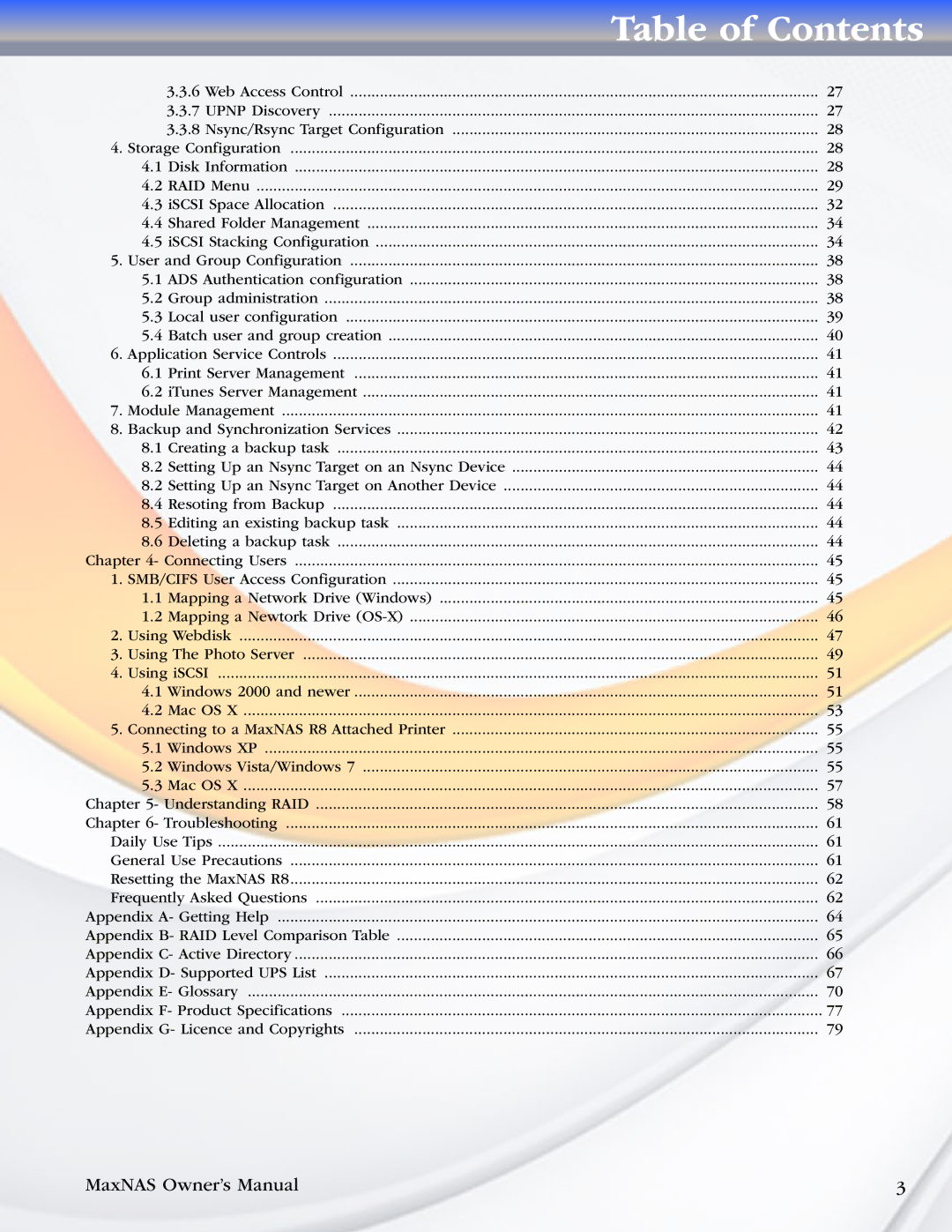
|
| Table of Contents |
| 3.3.6 Web Access Control | 27 |
| 3.3.7 UPNP Discovery | 27 |
| 3.3.8 Nsync/Rsync Target Configuration | 28 |
4. Storage Configuration | 28 | |
4.1 | Disk Information | 28 |
4.2 | RAID Menu | 29 |
4.3 iSCSI Space Allocation | 32 | |
4.4 | Shared Folder Management | 34 |
4.5 iSCSI Stacking Configuration | 34 | |
5. User and Group Configuration | 38 | |
5.1 | ADS Authentication configuration | 38 |
5.2 | Group administration | 38 |
5.3 | Local user configuration | 39 |
5.4 | Batch user and group creation | 40 |
6. Application Service Controls | 41 | |
6.1 | Print Server Management | 41 |
6.2 iTunes Server Management | 41 | |
7. Module Management | 41 | |
8. Backup and Synchronization Services | 42 | |
8.1 | Creating a backup task | 43 |
8.2 | Setting Up an Nsync Target on an Nsync Device | 44 |
8.2 | Setting Up an Nsync Target on Another Device | 44 |
8.4 | Resoting from Backup | 44 |
8.5 | Editing an existing backup task | 44 |
8.6 | Deleting a backup task | 44 |
Chapter 4- Connecting Users | 45 | |
1. SMB/CIFS User Access Configuration | 45 | |
1.1 | Mapping a Network Drive (Windows) | 45 |
1.2 | Mapping a Newtork Drive | 46 |
2. Using Webdisk | 47 | |
3. Using The Photo Server | 49 | |
4. Using iSCSI | 51 | |
4.1 | Windows 2000 and newer | 51 |
4.2 | Mac OS X | 53 |
5. Connecting to a MaxNAS R8 Attached Printer | 55 | |
5.1 | Windows XP | 55 |
5.2 | Windows Vista/Windows 7 | 55 |
5.3 | Mac OS X | 57 |
Chapter 5- Understanding RAID | 58 | |
Chapter 6- Troubleshooting | 61 | |
Daily Use Tips | 61 | |
General Use Precautions | 61 | |
Resetting the MaxNAS R8 | 62 | |
Frequently Asked Questions | 62 | |
Appendix A- Getting Help | 64 | |
Appendix B- RAID Level Comparison Table | 65 | |
Appendix C- Active Directory | 66 | |
Appendix D- Supported UPS List | 67 | |
Appendix E- Glossary | 70 | |
Appendix F- Product Specifications | 77 | |
Appendix G- Licence and Copyrights | 79 | |
MaxNAS Owner’s Manual | 3 |
